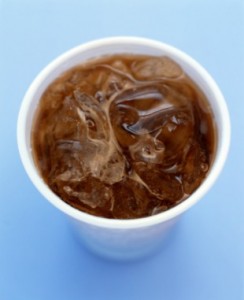Coca-Cola and Pepsi, the two companies that make up a good 90% of the soda market in the U.S., are changing the way they manufacture their caramel coloring because their current method classifies it as a carcinogen under California law.
Caramel coloring, which gives the colas their signature brown color, is formed in heating and browning processes of sugars. It can be formed either naturally (if you’ve ever caramelized onions, you have some idea of what I’m talking about here) or in mass quantities as an added food coloring. Commercially, it’s added to pretty much every type of food and beverage you can think of, as well as some household cleaning products.

Source: glamour.com
The two soft drink giants are adjusting their manufacturing process for caramel color in the United States because otherwise they would have to slap a giant cancer warning on their California labels. See, the problem ingredient is 4-methylimidazole, also known as 4-MEI, high levels of which seems to only be a problem in commercially produced caramel color. California recently put into law that products need to have less than 29 micrograms of 4-MEI per 12 ounces, which is 1/4-1/5 of the level that Coke and Pepsi currently contain.
Since the color doesn’t add anything but aesthetic value (and since the rival Dr. Pepper Snapple group’s levels were already below that limit), the two companies decided that rather than fight the label mandate, they would just change their production of caramel coloring. Despite their decision, Coke, Pepsi, and the American Beverage Association (an organization which represents the interests of the U.S. beverage industry) still want us to know that these requirements are “scientifically unfounded” “scare tactics”, and are sure to add that “not one single regulatory agency around the world considers the exposure of the public to 4-MEI as present in caramels as an issue”. Duly noted–California is often ahead of the curve.
4-MEI has in fact been linked to cancer in rodents in lab testing, but the Food and Drug Administration (FDA) claims that you’d need to drink around 1000 cans a day to get the same dose as those mice and rats. Frankly though, I think it’s definitely possible for humans to get up to that level over a long period of time, especially for kids who grow up drinking soda like it’s water. In a similar health case, complications from smoking cigarettes can take a good couple decades to manifest themselves but that doesn’t make cigarettes any less carcinogenic.
Regardless of the posturing, this development is yet another reason why people should really cut down on their soda intake. Water and juice might seem too bland in comparison, but if you give yourself a chance to get used to them you probably won’t even miss it. Plus, you’ll be so much healthier for it!
